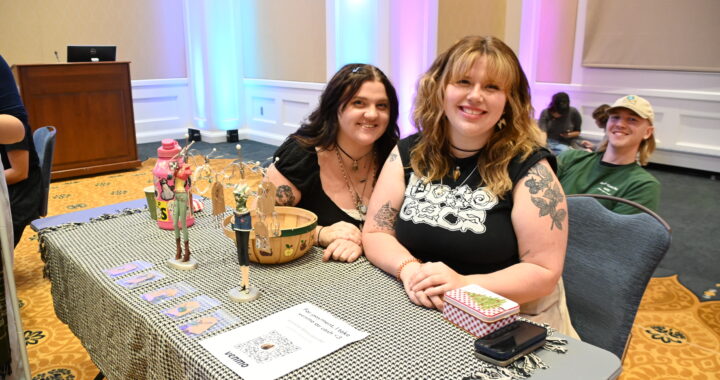Can You Write a Novel in a Month?
3 min readBy BRITTANY VITNER
It’s 3 a.m., and you’ve long since begun to ignore your roommate’s glares as you sit staring at your computer screen, glowing in the darkened room, while typing your last 600 words for yesterday’s word count. You reach through the strewn candy wrappers and empty chip bags and grope for your half-filled soda bottle, knocking over a pile of notes filled with character descriptions and maps of fictional castles. For the hundredth time, you wonder why you thought it was a good idea to take part in National Novel Writing Month. Then you return to writing.
The return of November means the return of National Novel Writing Month (NaNoWriMo) a period of 30 days when hundreds of thousands of writers across the globe have until 11:59 p.m. on Nov. 30 to create 50,000 words of original prose.
NaNoWriMo is a fun and useful activity both professional and amateur writers can take part in to work on their skills, write that story that’s been sitting on their shelf for the last five years, get out of writer’s block or just to have some fun with other writers.
NaNoWriMo is good for any writer. Works can consist of fiction, non-fiction, fantasy, science fiction, historical fiction, a short story collection, plays, poems, rants about laundry or whatever it is one wishes to write 50,000 words about, so long as it is original prose created within the limits of the month, and not beforehand.
For a liberal arts campus, NaNoWriMo provides an opportunity for students to practice their writing skills with free reign. There is no thesis or topic requirement. There are no judges, and participants are not required to turn their work in to get a grade. It is purely something you track on your own.
NaNoWriMo is also a good practice in time management. While the number 50,000 is rather intimidating, it is relatively easy to reach the goal with proper management of a daily writing regimen. By breaking the count into 1,667 words a day, which is about the equivalent of one and a half pages of prose, 50,000 words is easily reachable by the end of the month. This breakdown is actually strongly suggested by NaNoWriMo.org. The website allows participants to track their progress, and is completely free for users.
NaNoWriMo also can help writers hone their skills. Participants can learn a lot about how they write and what they enjoy writing. It can help them discover forms of the writing process that work for them, such as preparing an outline beforehand or using character charts, maps and other items to help plan the story. Furthermore, problem areas become highlighted, such as difficulty with dialogue or action scenes.
Plus, there is a large forum, and all the writers have opportunities to participate in write-ins with fellow local writers. Participants can get together to talk about writing, stories or just drink coffee and relax with company.
Overall, NaNoWriMo is a valuable and thoroughly enjoyable experience, and I wish anyone who chooses to try, this year or the next, good luck!



